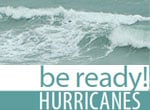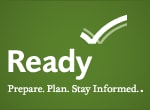ARCHIVED WEBPAGE: This webpage is for historical purposes and is no longer being updated. For the latest information, view the COVID-19 homepage.
Natural Disasters & COVID-19: Resources for Professionals & Emergency Workers

This page offers links to resources and information that public health professionals, healthcare workers, and emergency responders can use to help people stay safe during and after a natural disaster amid the COVID-19 pandemic.
COVID-19 Contact Tracing Scenarios: Disaster Shelters [PDF – 86 KB]: The scenarios in this document can be used by trainers and team leads to build skills for contact tracers. Staff in training and newly trained staff can use these scenarios to role-play how they would interview contacts, find out if they have any barriers to self-quarantine, and address those barriers. Specific scripts based on these scenarios should incorporate jurisdiction-specific processes and resources.
CDC’s Interim Guidance for General Population Disaster Shelters During the COVID-19 Pandemic: this document provides guidance on reducing the risk of introducing and transmitting COVID-19 in general population disaster shelters before, during, or after a disaster.
COVID-19 and Cooling Centers: this webpage provides guidance for federal, state, local, and tribal jurisdictions in the United States considering opening or operating cooling centers during the COVID-19 pandemic.
COVID-19 Considerations for Cleaner Air Shelters and Cleaner Air Spaces to Protect the Public from Wildfire Smoke: this webpage provides interim guidance to reduce the risk of introducing and transmitting SARS-CoV-2 in cleaner air shelters and cleaner air spaces.
Emergency Shelters in Disaster Response in Global, Low Resource Settings: this document provides suggestions that can be considered by emergency shelter staff in low-resource settings and can be adapted to follow national or local guidelines, and to account for local context. Local populations can be engaged in the planning and decision-making process by identifying trusted stakeholders and community leaders to provide feedback on proposed mitigation measures before their implementation.
Environmental Health Assessment Form for Disaster Shelters: this tool assists environmental health practitioners in conducting a rapid assessment of shelter conditions during emergencies and disasters. This tool can be modified to meet local needs during the coronavirus disease 2019 (COVID-19) emergency.
Recommendations for Disaster Sheltering of Household Pets, Service Animals, and Support Animals during the COVID-19 Pandemic: this webpage provides information to assist emergency planners who may need to consider local conditions, statutory authorities, resources, agreements, and other critical factors to form the final plan for disaster sheltering of household pets, service animals, and support animals during the pandemic.
National Mass Care Strategy: during times of emergency and disasters, mass care provides emergency relief and services to the community as a whole. To best address these needs, a National Mass Care Strategy has been developed through a collaborative process led by the American Red Cross, Federal Emergency Management Agency and National Voluntary Organizations Active in Disaster.
Generic Plans for COVID-19 Specimen Testing and Management During a Hurricane: this webpage offers considerations for what clinical laboratories testing for COVID-19 need to include in their plans to ensure that testing continues if their laboratory operations are impaired during hurricane season.
Exposure to air pollutants in wildfire smoke can irritate the lungs, cause inflammation, alter immune function, and increase susceptibility to respiratory infections, likely including COVID-19.
Public Health Strategies to Reduce Exposure to Wildfire Smoke during the COVID-19 Pandemic: this webpage provides information about wildfire preparedness and response during the ongoing COVID-19 pandemic. It is intended for use by public health, environmental health, and air quality personnel in federal, state, territorial, local, and tribal jurisdictions in the United States.
Wildfire Smoke and COVID-19: Frequently Asked Questions and Resources for Air Resource Advisors and Other Environmental Health Professionals: this webpage provides air resource advisors and other environmental health professionals with key messages about wildfire smoke and COVID-19. It also provides resources that can be given to communities affected by wildfire smoke during community spread of SARS-CoV-2, the virus that causes COVID-19.
- Going to a Public Disaster Shelter During the COVID-19 Pandemic
- Hurricanes and COVID-19
- Wildfire Smoke and COVID-19
- Disaster Resources
- Environmental Health Practitioners & COVID-19
- Health and Safety Concerns for All Disasters
- FEMA Coronavirus (COVID-19) Response
- FEMA COVID-19 Pandemic Operational Guidance for the 2020 Hurricane Season


